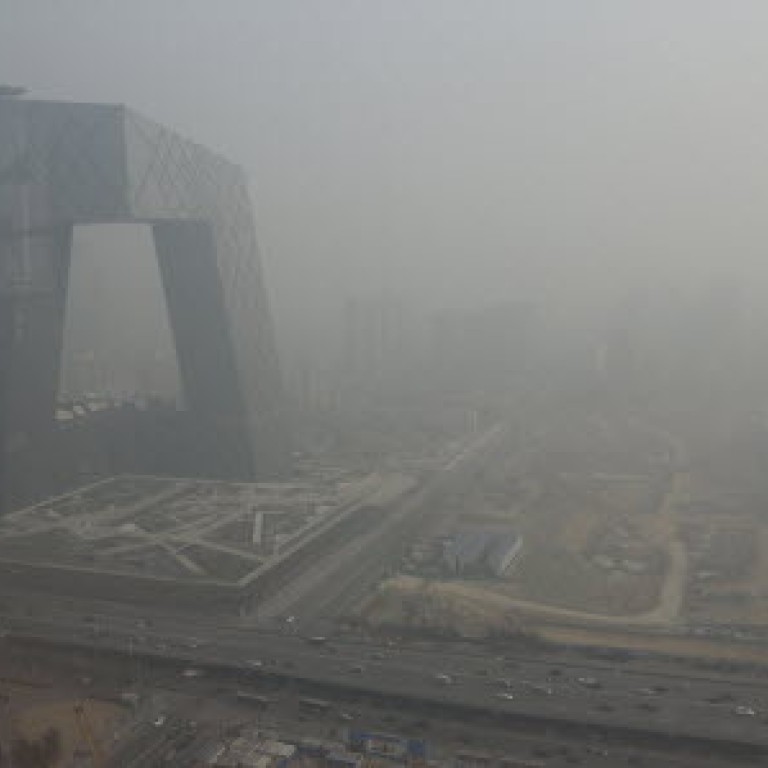
Scientists cast doubt over Beijing smog-busting technology projects
Researchers say using drones to spray chemicals cannot cope with the magnitude of the problem
Scientists have questioned whether specialised anti-smog technology, including the use of drones to disperse air pollution with chemicals, will have any significant impact on the problem.

The capital's meteorological bureau would spend 20 million yuan (HK$25 million) this year carrying out experiments aimed at reducing air pollution, the city government said.
No details were given of the equipment to be tested, but the cash will come on top of routine spending on weather-modification technology, such as cloud seeding used to produce rain.
The authorities in Beijing have come under intense criticism from the public in recent weeks and accused of failing to take decisive action to tackle smog. Concentration of PM2.5 levels in the capital exceeded 500 last month, according to US embassy data. The World Health Organisation recommends day-long exposure levels of 25.
One of the technologies scientists in the city have previously said they were investigating was spraying super-cold gas produced from liquid nitrogen into the air. It is hoped that a belt of cooler air, less than 20 metres thick, could stop polluted air from reaching street level.
Wang Gengchen, a researcher at the Institute of Atmospheric Physics at the Chinese Academy of Sciences, said that proposed measures, including using drones to wash away pollutants by spraying chemicals, were ineffective and unrealistic.
"When smog occurs, it usually covers a large area. How is it possible to deal with smog on such a large scale?" Wang told the . Clearing a small patch of sky would be pointless as the pollutants would soon spread to other areas.
The nation has tested technologies to disperse natural fog, rather than man-made smog, Wang said, but the systems were rarely used because of the high cost, limited effect and ecological impact of using chemicals.
Wang Zhihua, a senior official at the China Meteorological Administration, said artificial intervention to reduce smog would have a very limited effect, the reported. Reducing pollution emissions was the only meaningful solution to tackle the problem, Wang said.
The Beijing meteorological bureau declined to comment, saying it would not discuss budget details with the media.
Some internet users have questioned whether the technology research was the best way to tackle air pollution. "Is it a waste of money? You won't be able to get rid of the smog if you don't reduce emissions, isn't that clear?" one Sina Weibo user wrote.
Premier Li Keqiang told the National People's Congress in Beijing earlier this month the government had declared war on pollution.

